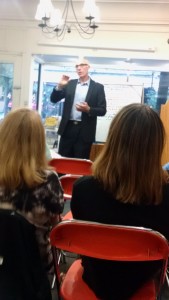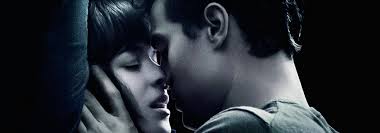
Tag me on Facebook or Twitter with a selfie that includes my new book, Journey Beyond Hardship, and win a hardcover copy autographed to you. I’ll mail a signed copy to the person whose selfie is the most original and inspiring. Have fun! I did! A copy of the book could make a nice holiday gift.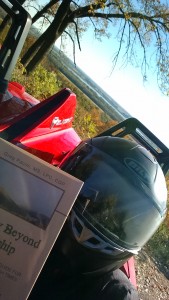
As many of you know, Anita Moorjani wrote the foreword for my new book. She’s the New York Times bestselling author of Dying To Be Me. FYI, she has a new book scheduled for release in the first half of next year. Watch for that.
Larry Dossey, MD, wrote an endorsement for my new book. You’ll find it on the back cover. He’s the New York Times bestselling author of Healing Words. FYI, he has a new book out: One Mind: How Our Individual Mind Is Part of a Greater Consciousness and Why It Matters. Check it out.
Let the games begin! Get your selfies to me by November 22, 2015. This should be a treat.
“Void where prohibited by law. One selfie per family. Not valid in…” Just kidding. Send as many selfies as you want.
It is your birthright to feel whatever you feel. But when you tire of suffering, here’s a simple, guiding principle to help you move forward. When you find yourself emotionally, mentally, or spiritually uncomfortable, but the moment itself offers no threat to your comfort, you may be doing one of three things which can produce suffering:
1) Thinking about something painful from your past
2) Imagining something painful in your future
3) Comparing yourself to someone else
The solution: consider the choice to lovingly bring yourself out of your mind, into your body, and into the moment that is full of life, waiting for you once you release the suffering.
Our world, our selves, seem so often full with pain. Or is it suffering we feel? What’s the difference? The difference is choice. In this blog we’ll explore that difference and how choosing might help.
This human thing we do has held me for sixty-one years. Of those years, thirty-five have been spent as a psychotherapist supporting folks in all sorts of pain and suffering. In this blended process of life and profession, a distinction between pain and suffering has developed.
It seems pain comes with life. There’s the literal pain we feel when we are hurt physically. I remember that pain when I was four or five. My little legs took off and jumped into a pile of dirt in a field across the street. We lived in Florida at the time. There was a stake hidden in the pile that gashed me.
Then there’s the affective pain we feel when we are hurt mentally or emotionally. I remember that hurt when I saw my dad cry for the first time after his mother died. We were driving in our station wagon from the funeral. My pain was seeing this powerful figure in a light that scared me.
There are countless ways we may feel pain physically: broken bone, headache, hunger, disease, sore muscle, gunshot, arthritis…on and on.
There are countless ways we may feel mental or emotional pain: heartbreak, news of job loss, victimization through abuse or prejudice, addiction, and so many more.
So how is this pain different from suffering?
All the physical, emotional and mental pains just listed (sad as it might be) are part of the world we live in. And when one of them occurs, it’s natural to feel pain. Injured in a car accident, you’re going to feel physical and emotional pain. It’s what we humans do. The pain is an automatic response designed to teach us. It’s the idea that you don’t put your hand on a hot stove more than once. This process of growth through pain is beyond our control. Without physical pain, we would not survive as a species.
Similarly, we need the pain of all our difficult emotions and the pleasure of all our positive emotions to tell us what direction helps us and what direction hurts us.
In this sense, physical, emotional, mental and perhaps even spiritual pain intends to guide us, all be it uncomfortable learning. And when our systems are working well, the initial pain is all we need to be pointed in a better direction.
This is where the distinction between pain and suffering begins to emerge.
A number of years back, I led a weekly support group for young physicians. At one meeting a doc came in late, clearly upset, and soon shared deep concerns about “a mistake” made with a patient earlier in the day. That doctor was in emotional and mental pain. We were all present and listening. The doctor’s reactions were real and reasonable.
But the doctor’s concern expanded into self-chastisement that wouldn’t let up. Eventually I simply asked, “When did you figure out what you would have done differently?”
“Almost immediately,” the physician responded.
Indirectly, I was teaching about the difference between pain and suffering. That doctor felt pain as soon as the negative impact on the patient was realized. And right after, that same pain helped that doctor figure a better way. This is the pain that comes with life, and guides us. But that physician’s rumination about the “mistake” was becoming suffering.
Pain is a now experience. Suffering is thinking about pain.
If you’re alive, you experience pain. Suffering, or thinking about pain, is optional.
Pain is the true teacher. Suffering is pain in sheep’s clothing.
As strange as it may sound, pain has something to give us. Suffering only takes: it takes our attention, it takes our time, it takes our joy. There’s no cheese down that path.
We will all make mistakes. And if those mistakes have negative consequences for us or others, most will feel some degree of discomfort and maybe even pain. But if we find ourselves hours, days or weeks later thinking through something we did or didn’t do or should have done, we are now suffering.
Suffering in this way can also take the form of thinking and rethinking something someone said or did to us. Yes, the initial injury hurt and caused pain. But if we are still thinking about it days later, we are creating suffering for ourselves. Suffering is a close cousin to worry and anxiety, all of which are fear’s offspring.
Two monks were given the privilege of walking from their monastery to the neighboring village for supplies. Before leaving they were strictly instructed not to speak with anyone, especially women. More importantly they were told not to touch women.
While getting supplies in the village, it began to rain…a lot. The dirt roads were now running with mud. Heading out of town and still in their silence, the monks came upon a well-dressed woman stranded on a corner. One monk handed his supplies to the other, picked up the woman and carried her across the road to drier ground.
Miles later, the stunned monk broke the silence: “We aren’t to speak with women, much less touch them, but you carried her across the road!”
“And I put her down miles ago. You are still carrying her,” said the other.
When we can’t put the initial pain down, we are suffering. Nothing wrong with it. It just steals our energy and keeps us unavailable to the life before us.
It seems that most pain has a shelf life. Eventually the event or circumstance that created our pain passes, and a more comfortable way is available once again. And while pain has a shelf life, suffering doesn’t. Suffering will be with us as long as we create it.
That’s right. Life creates pain. We create suffering. And we create suffering by our choices.
First of all, it’s important to say, there is no shame in suffering. If you are suffering, the last thing you need is for someone to tell you, “You did this to yourself.” Your suffering may hardly be bearable. And now you’re hearing you may be creating your suffering.
But if we create our suffering, that means we can uncreate it. If suffering is a product of my choice, perhaps I can choose something else.
Psychiatrist and concentration camp survivor, Viktor Frankl, MD, PhD, wrote about fellow survivors in his classic, Man’s Search For Meaning, who found a way to not suffer in the face of daily pain. Even though many of them had family members tortured or killed one after the other, these same people scrawled images of butterflies and flowers on the wooden walls of their horrific barracks.
It is your birthright to feel whatever you feel. But when you tire of suffering, here’s a simple, guiding principle to help you move forward. When you find yourself emotionally, mentally, or spiritually uncomfortable, but the moment itself offers no threat to your comfort, you may be doing one of three things which can produce suffering:
1) Thinking about something painful from your past
2) Imagining something painful in your future
3) Comparing yourself to someone else
The solution: consider the choice to lovingly bring yourself out of your mind, into your body, and into the moment that is full of life, waiting for you once you release the suffering.
Counseling the chronically and terminally ill for 15 years taught me lessons of the mind, the heart, the body and the soul. So in 2005, Journey Beyond Diagnosis was published with the hope of capturing the wisdom of those facing life-threatening disease.
By 2010, that book was virtually sold out. But people were still being diagnosed. And the familiar, internal nudge to write woke back up: the nudge to bring forward all the new knowledge from these brave, honest, scared, strong, desperate, daring and powerful people. Consequently, a second edition of Journey Beyond Diagnosis started taking shape.
Then life intervened. Tragedy struck in my own life, and it was hard. Writing became labored, and eventually ground to a stop. Making my way through tough times took what energy I had. Writing about tragedy while enduring it was not doable for me.
Once in a while, my hands could make words on the laptop. And then they couldn’t. This pecking at the second edition continued. With time, life started to feel a little better. People I trusted read bits and pieces of this edition, and in different ways encouraged me to not only keep writing, but to broaden the reach of the new material.
By now it had been 25 years counseling the chronically and terminally ill and 35 years as a psychotherapist for people suffering all matter of injury: infidelity, financial downfall, physical and sexual abuse, prejudice, death of a loved one, addiction, anxiety, depression, miscarriage, and just feeling empty for some clear reason, or no reason at all.
Given my recent reference for tragedy, earlier feedback that Journey Beyond Diagnosis was helpful even to those who had not experienced a diagnosis, and the mounting support to create a book that might benefit anyone dealing with life’s difficulties, the focus of the second edition shifted and became Journey Beyond Hardship.
Writing became more fluid and productive. An early draft of Journey Beyond Hardship was completed in the fall of 2014.
One of the first to see the new material was New York Times bestseller, Anita Moorjani. I took a chance and sent a galley proof of the book, inviting Anita to write the foreword. Tears streamed down my face weeks later at the news that she had accepted my invitation. My heart leapt again, when, through utter serendipity, New York Times bestseller, Larry Dossey, MD, sent me an endorsement. Any author would feel tremendously fortunate to have either of these magnificent human beings affiliated with one’s work. But to have both involved was overwhelming.
With Anita Moorjani’s and Dr. Dossey’s contributions now set for the book’s cover, Journey Beyond Hardship was made public in April of 2015.
Many say that writing and sharing yourself publically is daunting. There have been moments. Mostly, it’s been about honoring the stirring to bring to others what has been and continues to be given to me. Daily, my work steeps me in some of the richest elements of the human experience. There would be no rest if that potent knowledge did not get passed on.
So it’s with profound satisfaction and hope that Journey Beyond Hardship is now shared, along with these related comments from recent book signings:
“The presentation was so informative and clearly presented, I look forward to reading Greg’s book.” Christine Bubbeo
“Inspiring! Unique experience to hear the words of my heart interpreted and translated for me to understand in a new way.” Emily Thomas
“Excellent. I can’t wait to read it.” Julie Harig
“Illuminating book – a bright light for the dark road of hardship. Love the practical suggestions.” Rhonda Leifheit
Some know who God is. Some know who Conservatives are. Some know who Liberals are. Some know Chevy’s are best. Some know organic-only is best. Some know Blacks are best. Some know Whites, or Reds, or Blues are best. Some know who a woman is supposed to be. Some know who a man is supposed to be. Some know football is the true American pastime. Some know yoga is the answer. Some know who lawyers are. Some know the truth. They know there’s a heaven and who gets in, and who goes to hell, because they know there’s a hell. Some know that big government is bad. Some know big business is bad. Some sadly know, “I am bad.” Some know they are right about guns and gays and global warming; wars and walls and WikiLeaks. Some know they tend to think in absolutes. Some don’t.
If we tend to think in black and white, good and bad, all or nothing at all, we learned that thinking style from someone.
If we lived during the era of The Inquisition, and witnessed a woman gathering herbs for healing practices, we would know she was a witch. Black and white. No thinking. It’s what we were taught. “Hmmm. There’s a lady coming out of the woods with a basket full of plants. I’ll tell the authorities.” Done. She’s burned at the stake. No questions. No decisions to be made.
In a way, black and white thinking can be a bit more comfortable as a way to live. More pleasant perhaps because we remain members of the herd. Decisions are made easier when living as part of a culture of absolutes. If we’re not sure, the structure provided by the culture we ascribe to has an answer to our confusion.
The power of a culture, be it a nation or a neighborhood, can be remarkable. If we were Native Americans in the days of Columbus, we may not have actually been able to see the tall ships as they sailed the coast, even though they were in plain view. The people native to this land at that time had no cultural reference for those massive boats. Entire tribes, because they had no reference, literally could not see what they did not understand. But the shamans did see. Why? Because the shamans had the capacity to look outside the absolutes.
Mass mind is incredibly forceful. If we lived 150 years ago, we would have been absolutely dismissed for thinking humans could fly. But by stepping into the grey, we evolve. Any scientist will tell you, discovery is in the grey.
Yet grey thinking may separate us from the herd. This can be painful. If we tend to operate our lives in the grey, the unknown, the unmeasured, the “nobody really knows,” life may be more of a struggle. When it’s time to decide, there may be no clear-cut system of belief or culture to embrace or guide us. We may feel isolated and confused.
Thing about black and white thinking, decisions generally rely on the rematriculation of prior absolutes. Consequently, there’s not much new information. As a result, growth may be cumbersome and labored.
But in the grey, absolutes are fewer, so there’s room for new info to surface. Then growth has room to breathe and proceed more vigorously, albeit painful.
The genesis of black and white thinking is a curious matter. Many variables play in. The most direct link to living in absolutes is coming from absolutes. If we tend to think in black and white, someone taught us how.
We hold to black and white absolutes because absolutes are represented as the truth. As we grow up in the presence of these truths, our young minds and spirits find reward in agreeing with the absolutes of our tribe, be that tribe a family, a school, a state, a nation, a profession. Generally speaking, systems of absolutes reward compliance and discourage independent perspectives. Systems that discourage independence are usually fearful systems.
But grey is born of trust. Consider how trusting you must be if you haven’t decided who God is, who Conservatives or Liberals are, or just how people are supposed to be. You’re left with lots of questions. But you’re also left with a lot less judgements. Black and white thinking establishes the good and the bad. Once that’s established, everybody has to be judged to fit in one of those categories.
Walking without absolutes requires trust. But what are you trusting? Perhaps even this is an unknown.
Maybe it’s about trusting things as they are, even when things are hard or painful? What if it’s about trusting in what life and your gut teach you? Perhaps it’s about trusting yourself, just as you are. Consider how peaceful the world might be if each of us walked in that kind of trust.
Does a world full of individuals acting from their personal trust mean there is no longer guiding principles or social structures? It means that guiding principles and social structures rise up out of trust rather than fear.
In a world of individuals acting from their personal trust, is there still a time to be very clear; very strong? Yes. Is there a time to go to others for perspective and support? Yes. Does living in grey mean there will still be disagreements and opposing forces? Yes. But when we disagree from a place of trust, tensions don’t mount into absolute breakdowns in communication. And it’s from this place of love and trust that expansion and healing happen best for a person, for a people…for a planet.
Now the stage is set for fifty shades of growth.
New York Times bestseller, Anita Moorjani, posted the endorsement below on her Facebook page just days before her dear friend and mentor, Dr. Wayne Dyer, died. Dr. Dyer wrote the foreword for Anita’s bestseller, “Dying To Be Me.” She and Dr. Dyer became close colleagues, eventually leading major workshops together around the world. 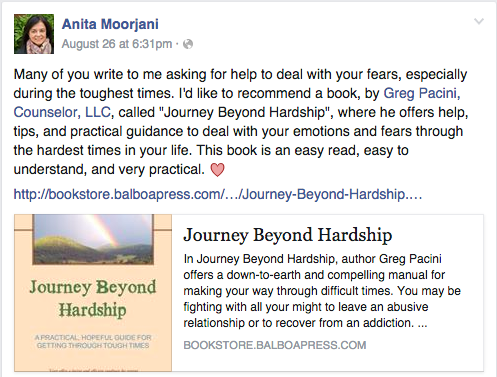
Anita, I and her staff began communicating last year. Those early exchanges led to Anita’s willingness to write the foreword for my book, Journey Beyond Hardship. We continue to stay in touch. Anita is a remarkable woman with a remarkable experience that baffles the medical community: complete recovery from terminal cancer following a Near Death Experience.
Many of you know I’ve been working with the chronically and terminally ill for over 25 years. In Journey Beyond Hardship, I address both the topic of The Self, and the topic of spirituality because many dealing with hardship come face-to-face with both subjects: “Who am I, and what’s life really about?”
Those are both questions Anita Moorjani is uniquely qualified to answer, and why her work is included in my book. Here’s a quote from Dying To Be Me: “In truth, I’m not my body, my race, religion or other beliefs, and neither is anyone else. The real self is infinite and much more powerful…During my NDE [near death experience], there was nothing outside of my greater awareness because I was one with the entirety of Universal energy…The infinite self is our essence. It’s who we truly are…”
I read Anita’s book years ago, and have it available for clients in my office. When my book was nearing completion last year the question became, who might be willing to endorse it? Anita was one of the first people who came to mind. Her work had become a poignant reference in my new book. More importantly, her loving presence reflects well the spirit I intend my work to express. I feel fortunate that she graced my book with her involvement.
Anita returned to the public eye this week for the first time since Dr. Dyer’s death and reports feeling his presence and support. Look for Anita Moorjani’s new book next Spring.
New York Times bestseller, Gary Zukav, introduced me to the love/fear paradigm years ago through his book, The Seat Of The Soul. It’s become clear to me, after 35 years counseling folks in all kinds of pain, that , more often than not, we are walking in either a state of love or a state of fear. Thank goodness, shift happens.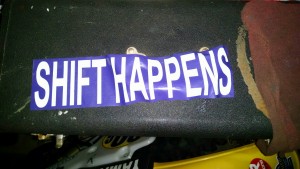
Trust, peace, tenderness, openness, gratitude, kindness, and healthy power: these are all emotions born of an inner experience of love.
Doubt, anxiety, anger, confusion, discontent, bitterness, rigidity, impatience and unhealthy power: these are all emotions born of an inner experience of fear.
Love and fear, like all emotions, are just that–emotions. Period. One emotion is no better than the others. All are just sign posts on the journey of our lives.
But here’s the important difference between those emotions in the love category and those emotions in the fear category. Those emotions born of an Innernet of love make us feel good. Those emotions born of an Innernet of fear make us feel bad.
By the way, I refer to these two states as Innernets because these core emotions have a measurable effect on a core aspect of our brains, the neuronets.
So while no emotion is bad, all emotions have a good or bad impact on how we feel, which affects our hormones, neuropeptides and neuronets. And this has a good or bad impact on our bodies.
Fundamentally, what helps us and our bodies most is to experience whatever emotion shows up and then gradually shift ourselves to an Innernet state that feels good or better.
This shift is not about thinking. To access an Innernet state that feels better, you have to deal with feeling.
So here’s a quick, three-step technique to make Shift Happen:
- Ask yourself regularly, “What’s my core feeling: love or fear?”
- Ask yourself, “Does this core feeling serve me right now?” Sometimes we are given guidance by our anger, sadness or fear. As a result, sometimes it’s important that we experience those emotions.
- If your core emotion right now does not serve you, gently shift what you experience at a core level, in your gut, to a feeling more like love.
In making Shift Happen for yourself, it’s important that you gauge the shift with your gut and not your mind. Your body can help here. Your body has ways of telling you that you are moving into an Innernet state of love: breathing slows, face relaxes, stomach quiets, and body movements become more fluid, just to name a few.
If you’re having trouble creating a shift in yourself to loving kindness, it’s OK. Be gentle with yourself. Don’t force or wrestle yourself into a state that feels better. Simply set an intention regularly to feel more of this inner goodness, and then invite that better feeling when you can. Again, the real shift happens at the emotional and physical level. To truly make a shift in this way requires fundamental shifts in body chemistry and form. This can take time. Please be patient with yourself.
If it helps, try going for the feeling you have when you’re in the arms of someone you love. Again, the feeling matters more than the thought. Or go for the feeling you have when holding a baby, or a puppy. Thoughts can take you there, but the destination we’re after is the feeling. Let your whole self and body bask in this feeling. Then Shift Happens.
When you can’t make the changes you really want, you may be stuck. That is, you may be resisting your own will because the force of that will resembles the force of the will of someone who over-controlled you in the past.
Here are four steps to get unstuck:
- Get clear about what you really want: to eat less, to stop shopping so much, to be friendlier, to find more stillness, etc.
- Notice the resistance you feel when you take steps toward what you really want
- Consider that your resistance is keeping you from what you really want, and that your resistance may be a way to feel some authority over the person from your past that over-controlled you
- Reaffirm what it is you really want, value the supportive force of your own will, then act in alignment with your intention
You’ve probably seen those commercials with Jeff Goldblum as Brad Bellflower for Apartments.com promoting the Apartminternet. At the end of the commercials he proclaims, “Change your apartment, change the world!” Well, that’s close.
All of us have had experiences we wish we could change. Things we’ve done we wish we hadn’t. People we’ve hurt we wish we could unhurt. More painful still, there are those among us walking around feeling badly about themselves while every one else thinks of them as remarkable people.
And yet compassion for ourselves just the ways we are, and including those aspects of ourselves that feel dark to us, brings a light that can “heal forward.”
“Even though I wanna exercise more, I’m not.” “Even though I wanna pray more, I’m not.” “Even though I wanna stop blowing up with people, I’m not.” “Even though I wanna drink less, I’m not.” If any part of this sounds familiar, you might be stuck. Let’s look at what that means and how to get unstuck.
It’s not uncommon to want to improve some part of yourself. Gestalt therapists actually think people have an instinct for wholeness. But stuckness is different from this. Stuckness keeps you circling around an issue, even though you really believe you want that issue to change. Matter of fact, it can sometimes feel like the more you want an issue to change, the more resistant that issue seems to be to changing. What!?
Here’s a definition of stuckness: the inability to tolerate your own will because it echoes the will of someone who over-controlled you in the past.
Endorsed by two New York Times bestselling authors.”
